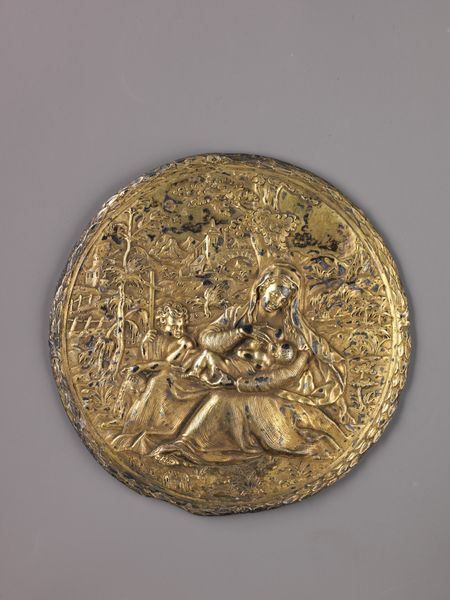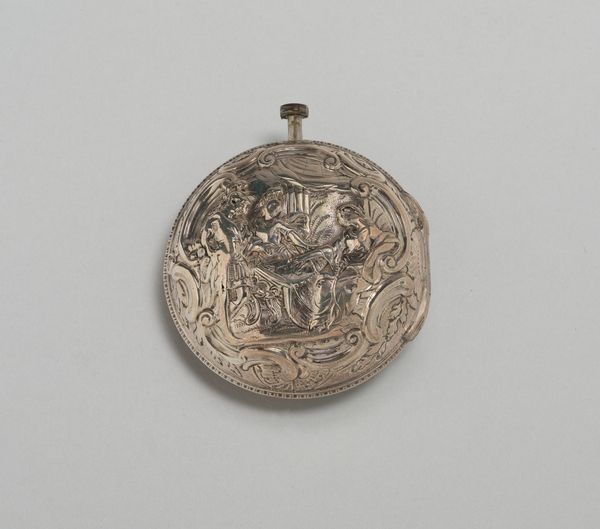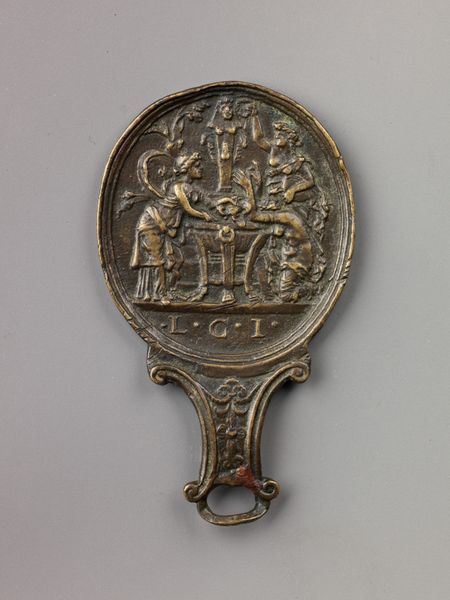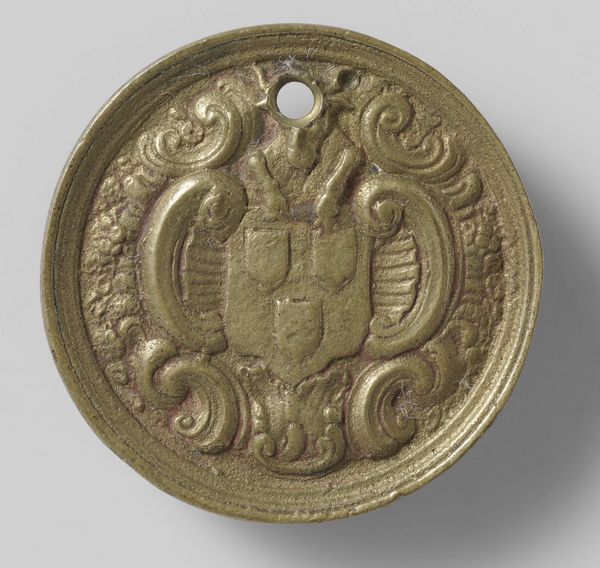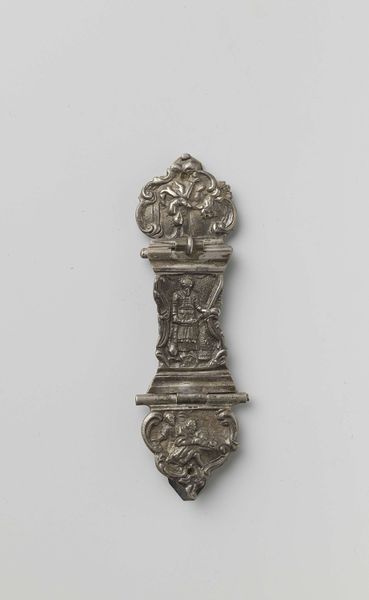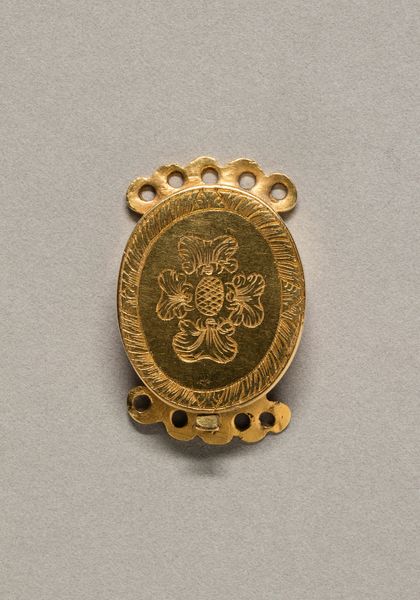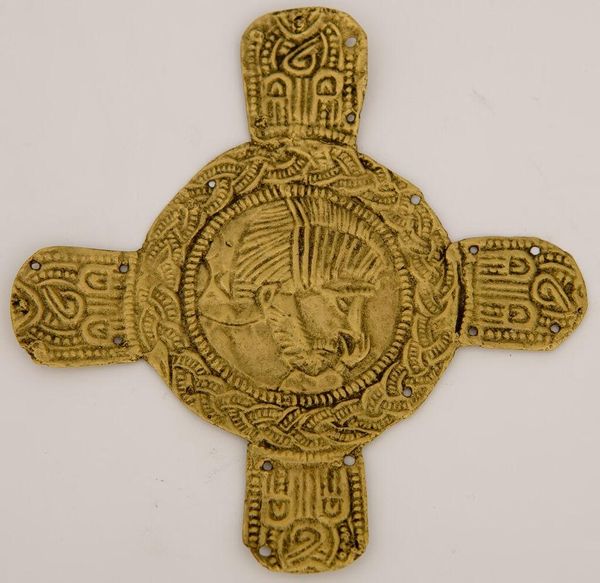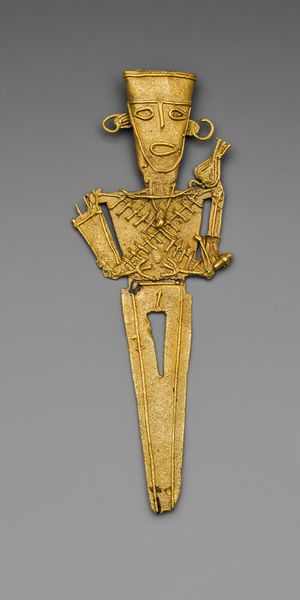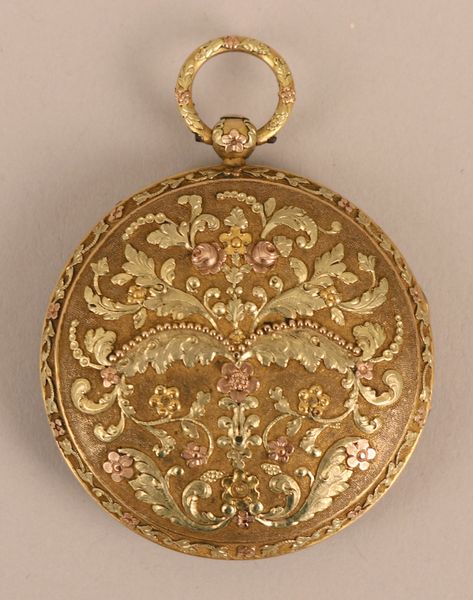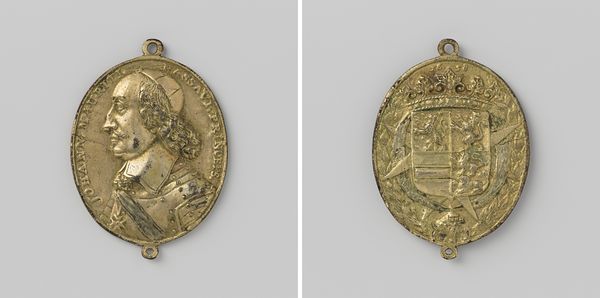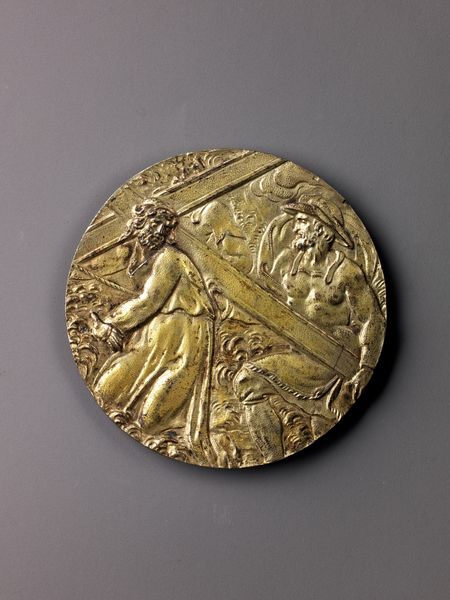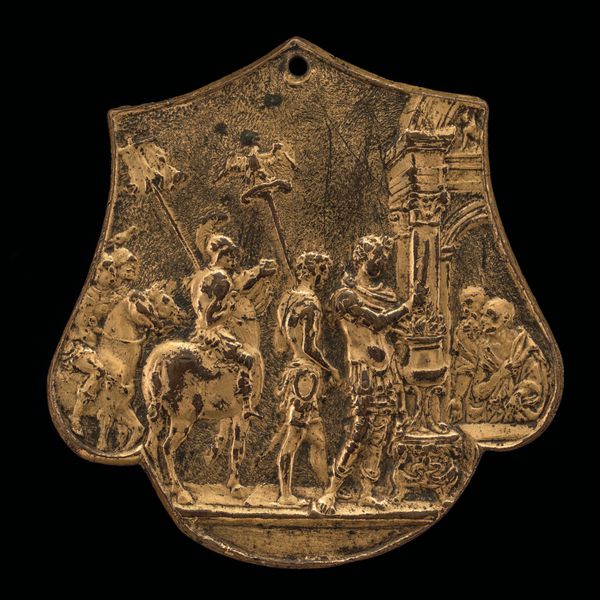
metal, relief, sculpture
#
portrait
#
metal
#
sculpture
#
relief
#
mannerism
#
figuration
#
sculpture
#
history-painting
Dimensions: height 11.6 cm, width 8.0 cm
Copyright: Rijks Museum: Open Domain
Curator: Welcome. Today, we're looking at a Mannerist relief in the Rijksmuseum collection, “Minerva” by Paulus Willemsz. van Vianen, crafted sometime between 1575 and 1600. It’s worked in metal. Editor: My first impression is… dense. It feels very self-contained, almost like a jewel or elaborate heraldic crest. The sheer detail is striking. Curator: Absolutely. The composition is rigorously organized, almost compartmentalized. Note the tripartite division—the cherubs above, Minerva with her shield and spear in the central field, the leonine masks flanking. This reinforces a visual hierarchy typical of Mannerist aesthetics. Editor: The choice of Minerva, goddess of wisdom and strategic warfare, is intriguing. What symbolic role might she be playing here? We often see her as a representation of the rational mind, but here, almost surrounded by these cherubic figures, is there a counter-narrative at play? Curator: Well, the iconography is fascinating. While Minerva embodies reason, the flanking cherubs and the foliage designs soften that stark intellectualism. Remember, Mannerism loved complexity and tension, a balance of intellect and sensuality. The shield itself, its circular form, provides a compelling geometric counterpoint to the linear thrust of the spear, for example. Editor: And what of the material itself? Working with metal grants a particular sheen and durability to the relief, it ensures the images and their stories, persist, right? I can imagine it shining when caught in a shaft of sunlight, these stories come alive, passed down across time. Curator: Precisely. And don’t overlook how the malleability of the metal has allowed van Vianen to create these almost painterly gradations in relief, look at the softness he gets on the bodies of the figures. It's like chiaroscuro, but translated into three dimensions through the metal itself. Editor: So, beyond the pure formalism, this "Minerva" evokes something enduring—the resilience of wisdom and the continuous human striving towards understanding, framed, crucially, by softer elements. It suggests that those two worlds, knowledge and passion, aren’t actually separable. Curator: A fitting summation. Through its deliberate organization, dynamic lines, and shimmering surface, van Vianen's “Minerva” continues to offer complex narratives through time.
Comments
No comments
Be the first to comment and join the conversation on the ultimate creative platform.
